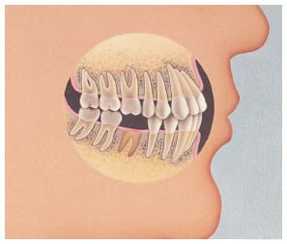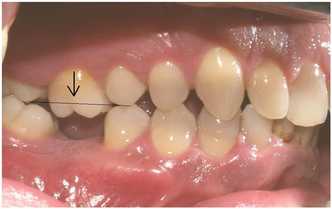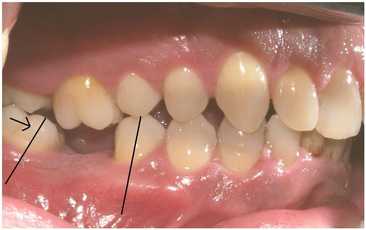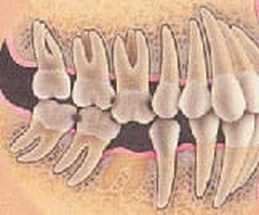|
Many people wonder why it’s necessary to replace missing teeth. Let’s see what happens when a tooth is lost and is not replaced.  For the sake of our example, we’ll presume you have a missing lower molar, as in the photo here.  When we’re young and our teeth are erupting, they’re programmed to keep erupting until they meet something. So when you lose a tooth and don’t replace it, the process starts again. The corresponding tooth in your opposite jaw will once again start erupting. Unfortunately, when the shifting occurs, the tooth moves, but the bone that holds in the tooth does not move with it. This results in a loss of bone support for the opposing tooth  Teeth also literally lean on each other. When you lose a tooth, the tooth immediately behind shifts forward. This throws off your bite and makes you more prone to tooth grinding (“bruxism”) and disorders related to the joint between the upper and lower jaws, the TMJ.  All of this shifting has a domino effect. Since it’s more difficult to clean these areas, cavities develop in the hard to reach areas. Periodontal disease, or so called “gum and bone” disease also develops more easily since you can’t clean these areas. There are solutions for replacing teeth that Dr. Moorhead will cover in a future article. But if you have a choice on whether to save a tooth, you’ll have less cost and a better result if you save your tooth. If you know your teeth need attention, give us a call today! You’ll be glad you did.
1 Comment
7/20/2023 06:41:33 am
This article highlights the importance of replacing missing teeth, and it makes a lot of sense to me. I never realized the domino effect that occurs when a tooth is lost and not replaced. It's eye-opening to learn about the bone loss, shifting teeth, and other dental issues that can arise from one missing tooth. I'll definitely be more proactive about my dental health and consider tooth replacement options if needed. Thanks for the informative article!
Reply
Leave a Reply. |
Articles
All
AuthorDr. Moorhead and his team write about dental news, and answer patient questions. Archives |

 RSS Feed
RSS Feed